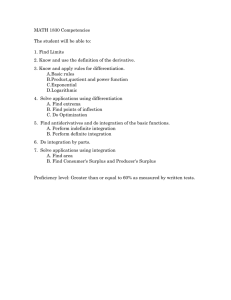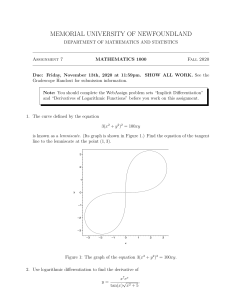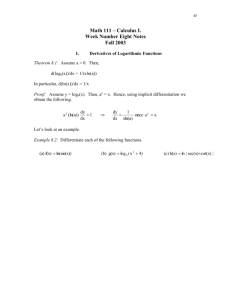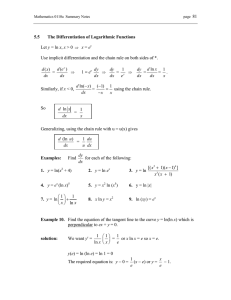Logarithmic Differentiation Examples & Explanation
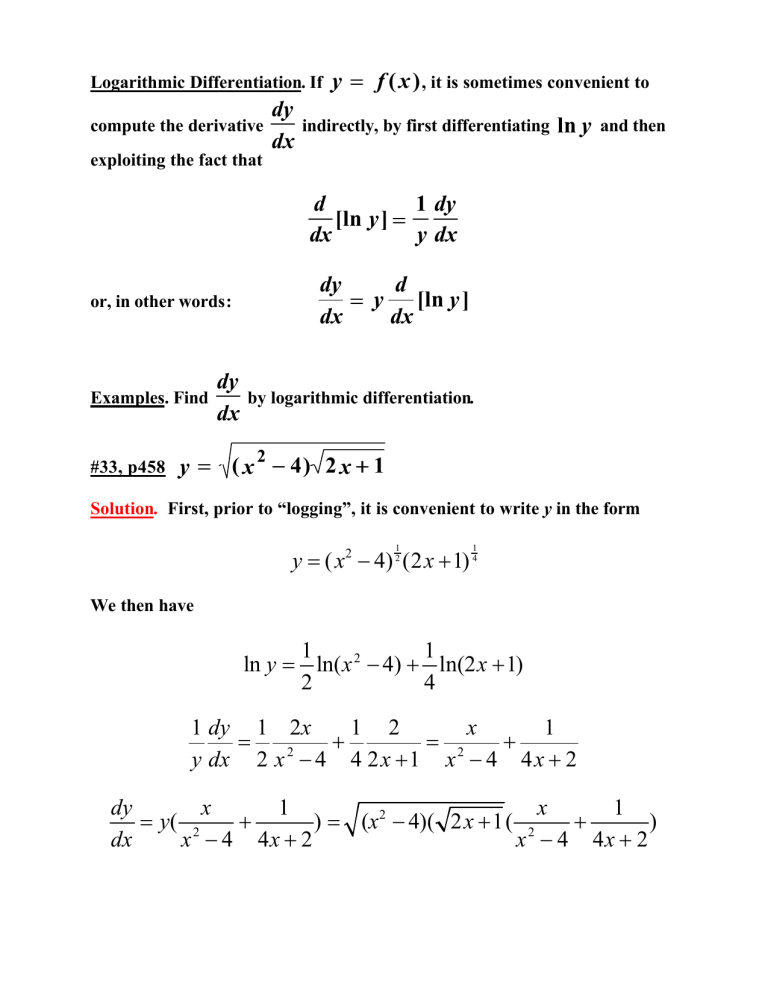
Logarithmic Differentiation. If y
== f ( x ) , it is sometimes convenient to compute the derivative dy dx exploiting the fact that
indirectly, by first differentiating ln y and then or, in other words: d dx
[ln y ]
== dy dx
1 y dy dx
== y d dx
[ln y ]
Examples. Find dy dx
by logarithmic differentiation .
#33, p458 y
==
( x
2 −−
4) 2 x
++
1
Solution. First, prior to “logging”, it is convenient to write y in the form y
=
( x
2 − 1
4) (2 x
+
1)
1
4
We then have dy dx
1 dy
= ln y
1 y dx 2 x
=
1
2 ln( x
2
− +
1
4 ln(2 x
+
1)
2
2 x
−
4
+
1
4 2 x
2
+
1
= x
2 x
−
4
+
4 x
1
+
2
= y ( x
2 x
−
4
+
4 x
1
+
2
)
=
( x
2
−
4)( 2 x
+
1( x
2 x
−
4
+
4 x
1
+
2
)
#36, p458 y
== x x
Solution.
This problem is typical of what one must do in order to differentiate a “power function” in which both the base and the exponent are variable.
Logarithmic differentiation is made to order for problems such as this. y
= x x
ln y
= x ln x
∴
1 dy y dx
= x d dx x
+ x d dx x
= x
1 x
+ x dy
= y
+ x
= x x
+ x dx
= + x
